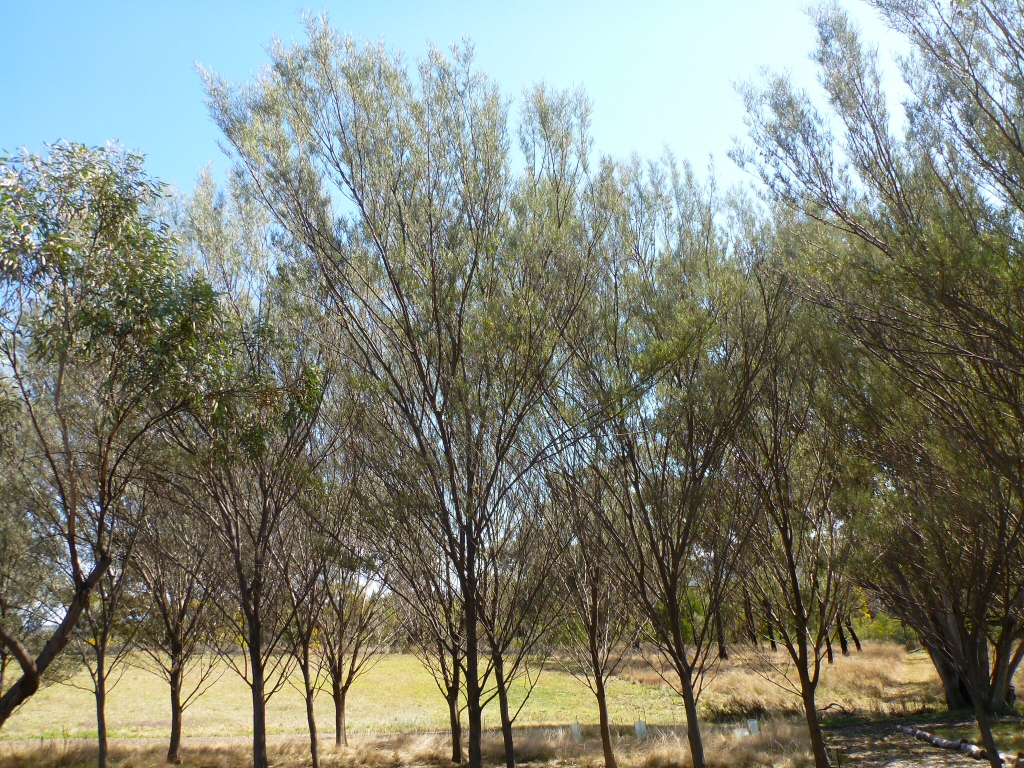This Acacia has a variable habit and can grow as a shrub (in more arid conditions) or a small tree (with more water available). It is often a profuse flowering plant with rod-like flower heads and provides light shade.
Livestock can eat the foliage, while the wood was used for Aboriginal weapons and tools, as well as for fences. The mulga has some other interesting uses, the seeds are edible once cooked, dried and ground, and are then traditionally made into seed cakes. It also produces a vegetative ‘fruit’ called the mulga apple, which is a swollen shoot caused by a wasp whose sting creates an insect gall, purported to have a sweet taste similar to an apple.
Great plant for dry areas as it is drought resistant, and also tolerant of frosts. It needs a medium to light well-drained soil and is tolerant to lime. Grows best in full sun, although can grow in part-sun. The roots of this plant fix nitrogen gas from the air in soil which is used by the roots as a source of nitrogen and helps deal with the poor soils in its natural growing environment.
Acacia aneura – Mulga Wattle

Family : Fabaceae
Cultivar Name:
Plant Type : Small tree, Large shrub
Width : 6
Flowering Time : Spring, Autumn, Winter
Soil Type : Sandy, Loamy, Sandy loam, Clay loam, Poor soil
Climate Zone : Warm temperate, Cool temperate, Mediterranean, Cool, Semi-arid, Arid
Growth Habit : Evergreen, Open foliage, Spreading
Soil Moisture : Dry, Well-drained
Special Uses : Edible, Cut flower, Erosion control, Honey producing plant, Bird nesting plant, Pollution tolerant, Fast growing
Scientific Name: Acacia aneura
Common Name : Wattle
Height : 10
Flower Color : Yellow, Gold
pH Level : Acid, Neutral, Alkaline
Plant Environment : Low maintenance garden, Flower garden, Drought resistant
Light : Sunny, Light shade
Lifespan : Perennial
Frost Tolerance : Tolerates heavy frost
Attracts Wildlife : Bees, Seed eating birds, Butterflies, Other insects
